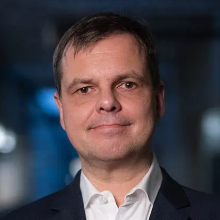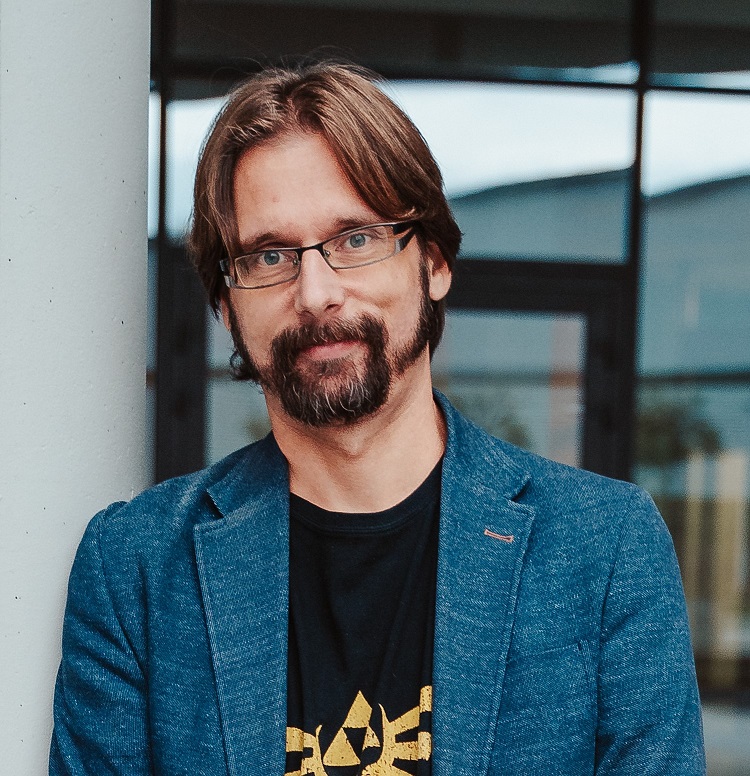Program
Keynotes

Prof. Dieter Schmalstieg
Alexander von Humboldt Professor of Visual Computing
Institute for Visualization and Interactive Systems (VIS)
Visualization Research Center (VISUS) at the University of Stuttgart, Germany
Title: Creating Intelligent Interfaces with Augmented Reality
Abstract: Augmented reality (AR) devices are finally appearing as commercial products. This development ushers in a new form of mobile computing, which replaces the "miniature desktop" on our smartphones with contextual and spatial computing. At the same time, we are overwhelmed with artificial intelligence technology, but it often comes without a convincing user interface. This talk will cover important emerging directions in AR, in particular its use for providing guidance and assistance in real-world tasks and its role in new ways of human-centered artificial intelligence off the beaten path. It will examine recent trends in 3D reconstruction and creation of digital twins that can be queried in real time to synthesize user interfaces that are situated and context-aware.
Title: Creating Intelligent Interfaces with Augmented Reality
Abstract: Augmented reality (AR) devices are finally appearing as commercial products. This development ushers in a new form of mobile computing, which replaces the "miniature desktop" on our smartphones with contextual and spatial computing. At the same time, we are overwhelmed with artificial intelligence technology, but it often comes without a convincing user interface. This talk will cover important emerging directions in AR, in particular its use for providing guidance and assistance in real-world tasks and its role in new ways of human-centered artificial intelligence off the beaten path. It will examine recent trends in 3D reconstruction and creation of digital twins that can be queried in real time to synthesize user interfaces that are situated and context-aware.

Prof. Dr. Libor Váša
Professor at the Centre of Computer Graphics and Visualization, Department of Computer Science and Engineering, Faculty of Applied Sciences at the University of West Bohemia, Czech Republic
Title: Efficient Compression of Triangle Mesh Sequences: Optimizing for Virtual Reality and Immersive Environments
Abstract: Triangle meshes are a fundamental representation of 3D surfaces widely used in computer graphics and virtual reality. When it comes to capturing shapes that evolve over time, triangle mesh sequences present a natural and expressive choice. Unlike skinning-based animations, they offer significantly more generality and flexibility. With the advent of modern 3D acquisition techniques, such sequences can now be reliably reconstructed from real-world dynamic scenes.
However, this increased expressiveness comes at a cost — triangle mesh sequences are often extremely demanding in terms of memory, storage, and transmission costs. In this talk, I will explore how these limitations can be addressed through suitable compression methods. I will discuss when and how such compression is effective, outline the key technical challenges, and highlight how some of the tools originally developed for compression can be repurposed for other tasks, such as editing or manipulating mesh sequences. Special attention will be given to applications relevant to virtual reality and immersive environments.
Title: Efficient Compression of Triangle Mesh Sequences: Optimizing for Virtual Reality and Immersive Environments
Abstract: Triangle meshes are a fundamental representation of 3D surfaces widely used in computer graphics and virtual reality. When it comes to capturing shapes that evolve over time, triangle mesh sequences present a natural and expressive choice. Unlike skinning-based animations, they offer significantly more generality and flexibility. With the advent of modern 3D acquisition techniques, such sequences can now be reliably reconstructed from real-world dynamic scenes.
However, this increased expressiveness comes at a cost — triangle mesh sequences are often extremely demanding in terms of memory, storage, and transmission costs. In this talk, I will explore how these limitations can be addressed through suitable compression methods. I will discuss when and how such compression is effective, outline the key technical challenges, and highlight how some of the tools originally developed for compression can be repurposed for other tasks, such as editing or manipulating mesh sequences. Special attention will be given to applications relevant to virtual reality and immersive environments.
